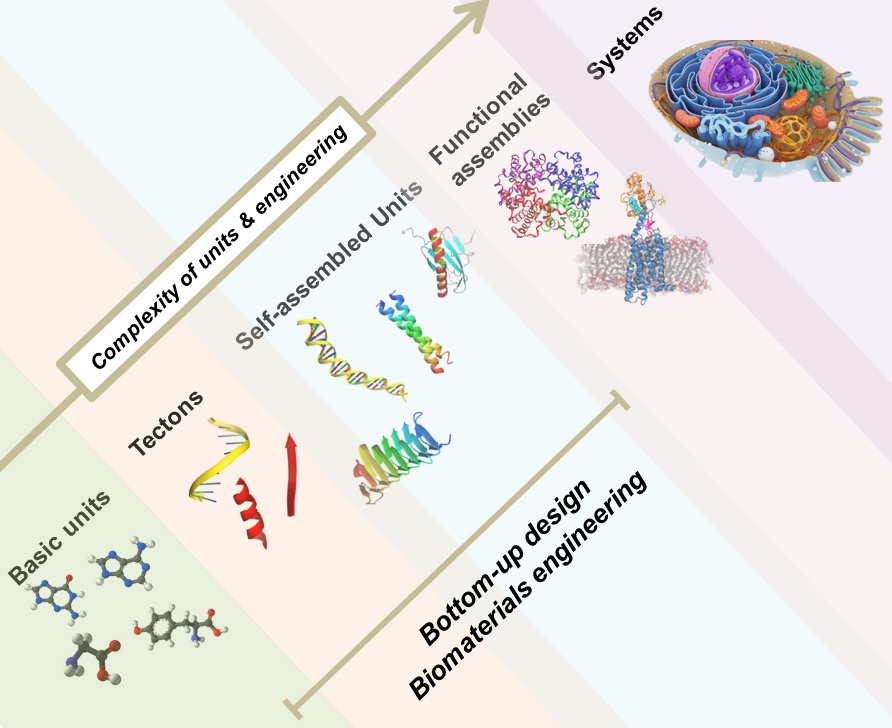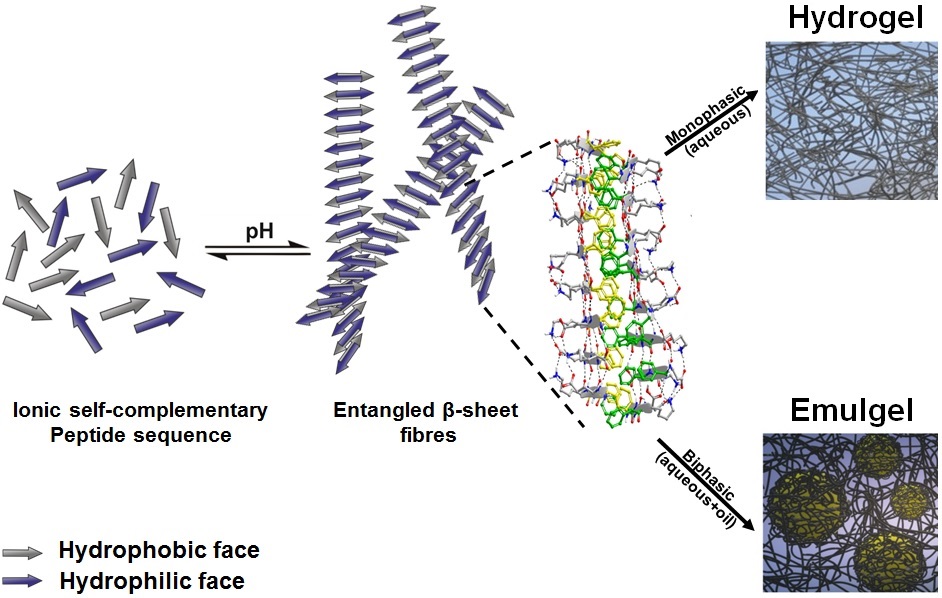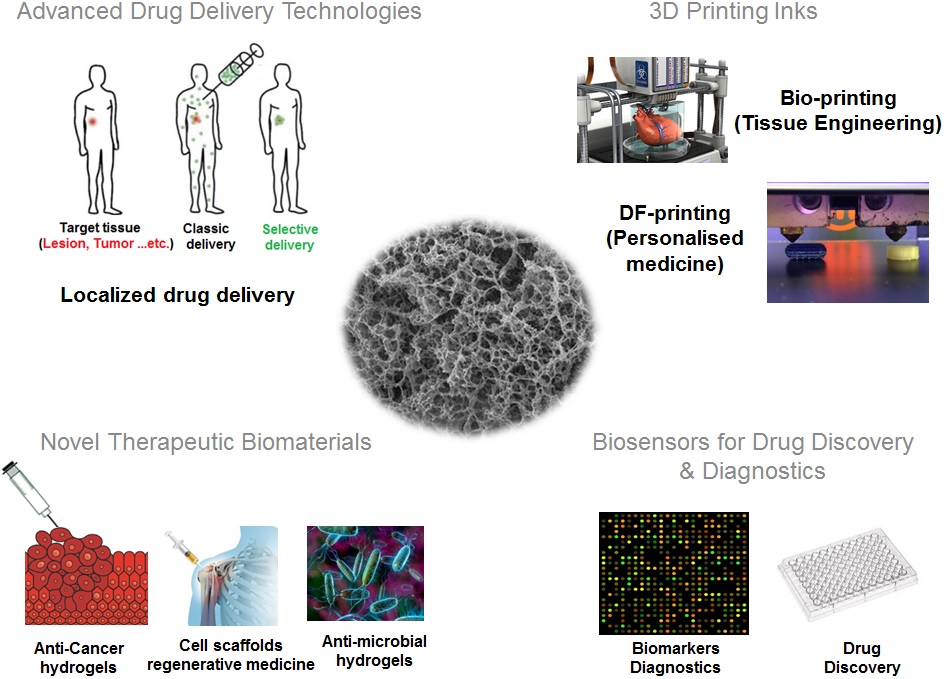Molecular self-assembly has been exploited in Nature to develop the complex higher macromolecular structures of both the genome and proteome. Our work in PBNG focus on understanding the fundamentals behind self-assembly of protein structures and learning lessons from those biomacromolecules for the design of de novo ultra-short constrained peptides that self-assemble into bio-inspired fibril structures. Using chemical toolbox of amino acid building blocks, we adopt the bottom-up engineering approach for the rational design of our peptides, where the primary sequence dictates the resulting self-assembled nanostructure.

Inspired by the baker’s yeast Z-DNA binding protein unique motif EAK16 (Zhang et al. EMBO 1992,11, 3787; Zhang et al. Biopolymers 1994,34, 663), we developed Ultrashort Ionic-complementary Constrained Peptides or UICPs (4-5 amino acid long) that self-assemble into thermodynamically stable β-sheet nanofibres triggered by pH alteration of the peptide aqueous solution. Above critical gelation concentration, peptide nanofibres entangle into a 3D fibrous network forming self supported viscoelastic hydrogels. The amphiphilic fibres showed to posses interfacial activity when mixed with immiscible oil phase forming nanofibrillised emulgels (Wychowaniec et al. Biomacromolecules 2020).

We have manipulated those peptide-based nanostructures for the innovation of novel stable, responsive and functional bionanomaterials with various potential pharmaceutical, biomedical and biotechnological applications. Recently, we have started exploring the interfacial activity of those self-assembled structures with the potential applications as emulsifiers and as stabilising agents in biopharmaceuticals. Another recent area of interest is using nanofibrillised peptide microcapsules for encapsulation of stem cells as safe vehicles for cell therapy application. We are currently tailoring the material properties of our peptide hydrogels to develop inks for 3D bioprinting for tissue engineering and for 3D printing of solid dosage forms for personalised medicine applications. The innovation of various therapeutic hydrogels is being investigated with particular interest in antimicrobial hydrogels for combating antimicrobial resistance as well as anticancer hydrogels for the localised therapy of solid tumours. We started looking into developing hydrogel-based biosensors for diagnostics and drug discovery research.

Current Projects
*Drug functionalised peptide nanofibers for cancer therapeutics
*Anti-microbial peptide nanogels for topical applications and as lubricants for catheters
*Self-assembling peptide nanofibers as interfacial stabilisation systems for emulsion formulations
*Nano-fibrillised peptide microcapsules for stem cells encapsulation
*Peptide nanoparticles for targeted drug delivery
*Self-assembling peptide nanofibers as protein aggregation suppressors in Biopharmaceuticals
*Microfluidics for the fabrication of peptide emulgels
